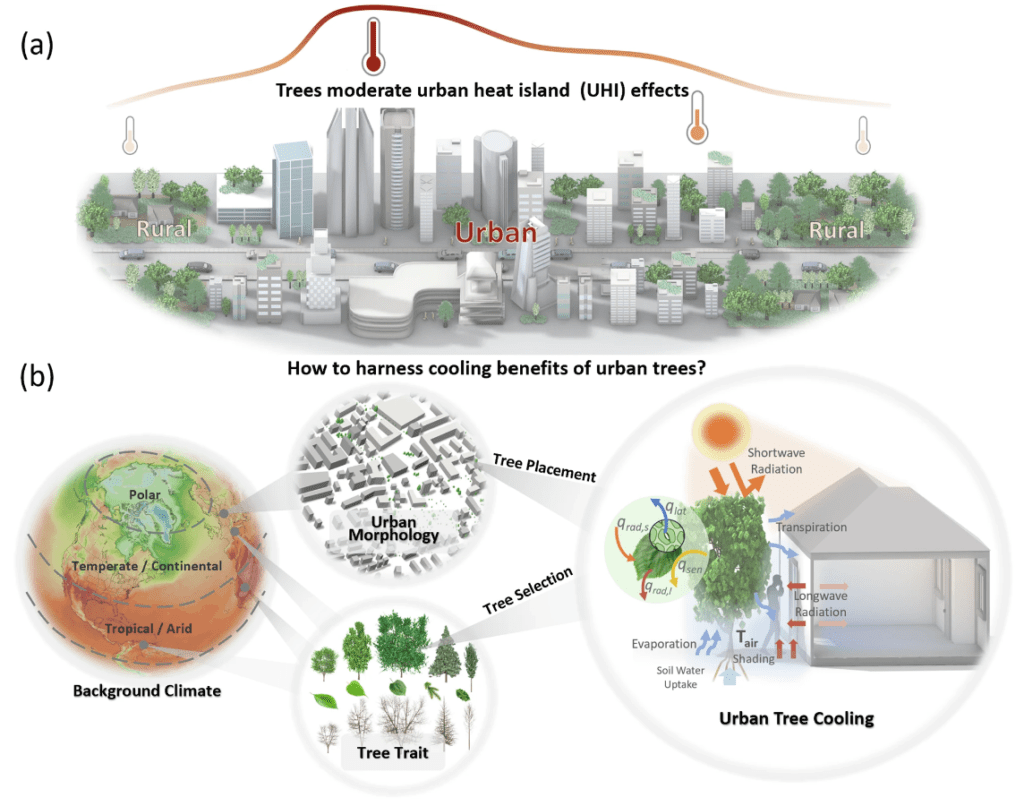Our new paper, “Cooling efficacy of trees across cities is determined by background climate, urban morphology, and tree trait“, is published in Communications Earth & Environment (IF: 8.1).
The paper can be downloaded at https://www.nature.com/articles/s43247-024-01908-4.
Authors: Haiwei Li, Yongling Zhao, Chenghao Wang, Diana Ürge-Vorsatz, Jan Carmeliet, & Ronita Bardhan
Abstract: Urban planners and other stakeholders often view trees as the ultimate panacea for mitigating urban heat stress; however, their cooling efficacy varies globally and is influenced by three primary factors: tree traits, urban morphology, and climate conditions. This study analyzes 182 studies on the cooling effects of urban trees across 17 climates in 110 global cities or regions. Tree implementation reduces peak monthly temperatures to below 26 °C in 83% of the cities. Trees can lower pedestrian-level temperatures by up to 12 °C through large radiation blockage and transpiration. In tropical, temperate, and continental climates, a mixed-use of deciduous and evergreen trees in open urban morphology provides approximately 0.5 °C more cooling than a single species approach. In arid climates, evergreen species predominate and demonstrate more effective cooling within compact urban morphology. Our study offers context-specific greening guidelines for urban planners to harness tree cooling in the face of global warming.
DOI: https://doi.org/10.1038/s43247-024-01908-4

